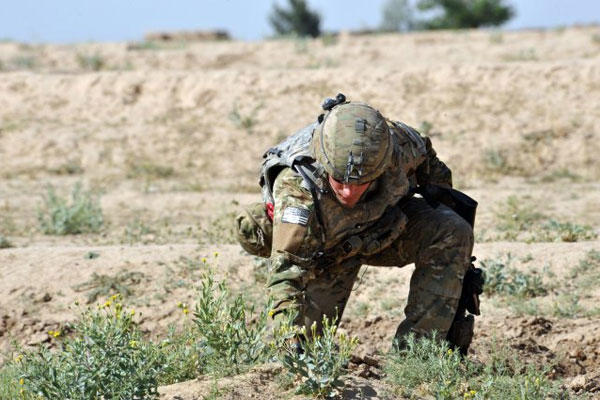JOINT BASE LEWIS MCCHORD, Washington -- U.S. Army Explosive Ordnance Disposal (EOD) Soldiers destroyed a live Civil War-era artillery round discovered in Ilwaco, Washington, April 22.
U.S. Army EOD Soldiers from 20th CBRNE Command (Chemical, Biological, Radiological, Nuclear, Explosives) were called in by law enforcement officials after the military munition was found.
The EOD team was from the Joint Base Lewis McChord, Washington-based 707th EOD Company, 3rd EOD Battalion, 71st EOD Group, 20th CBRNE Command.
The EOD team leader, Staff Sgt. Joshua Boland, determined that the live artillery round was safe to move away from the site. Boland then hand carried the round 300 meters away and disposed of it through detonation.
Capt. Shawn T. McMickle, the commander of the 707th EOD Company, said the artillery round was an Absterdam Type 2/3 Projectile.
McMickle said his company has responded to three similar Civil War-era rounds since he has been stationed at Joint Base Lewis McChord. According to McMickle, the police said old rounds are often discovered when building new houses or clearing wooded areas.
"(The police) also informed us that Fort Columbia, Fort Stevens and Fort Canby were old batteries in the late 1800s that would conduct practice fires into the hillsides," said McMickle. "It is unclear if they are misfired rounds or misplaced rounds."
A one-of-a-kind multifunctional military formation, the 20th CBRNE Command serves with joint, interagency and allied partners to combat CBRNE threats around the globe.
In addition to rendering safe explosives on military posts, training ranges and proving grounds around the nation, 20th CBRNE EOD technicians respond to discovered military munitions in support of law enforcement agencies.
In fiscal year 2014, 20th CBRNE EOD Soldiers responded to more than 2,000 unexploded ordnance incidents, both on and off post, across the United States.
An Iraq and Afghanistan veteran from Milford, Penn., McMickle said his company covers 20 counties in western Washington and northern Oregon for domestic explosive mitigation missions.
"The most unique aspect of the EOD response mission is you never know what you will see," said McMickle. "Almost every call is different in some fashion."
Command Sgt. Maj. Harold E. Dunn IV, 20th CBRNE Command's senior enlisted leader, said unexploded ordnance can found almost anywhere.
"You name it. Mantles in homes, basements, scrap yards, trash cans, dumps, offices, garages and on desks," said Dunn, a native of Fredericksburg, Va.
A seasoned Army EOD technician, Dunn has responded to more than 400 EOD incidents.
Dunn has seen an unpinned grenade in a garage, practice bombs in a basement and a landmine on a mantle.
After years of defusing explosive devices around the world, the command sergeant major said unexploded ordnance is best left in the hands of professional EOD technicians.
"If you find unexploded ordnance, stay away from it and notify your local authorities," said Dunn.






























